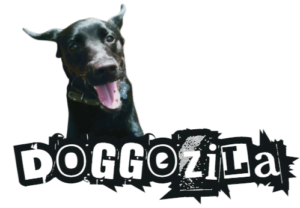The whimsical nature of dogs never ceases to amaze us, from their playful antics to the adorable way they chase their tails. But have you ever wondered if our furry friends embark on dreamlike adventures when they drift into slumber? In this extensive exploration, we delve into the fascinating question: Do dogs dream?

THE SCIENCE BEHIND DOG DREAMS
Through a blend of scientific insights, behavioral observations, and a touch of wonder, we aim to unravel the mysteries of the dog mind and shed light on the dreamy realms your dog may traverse during sleep.
Dog Dreaming Phase: Rapid Eye Movement (REM) Sleep
Understanding the sleep cycle is key to deciphering whether dogs experience dreams. We’ll explore the REM sleep phase, where dreaming predominantly occurs, and its significance in the dog sleep cycle. Recognizing the role of REM sleep provides a foundation for exploring doggy dreams. Understanding the sleep cycle is crucial to unraveling the mystery of dog dreams. The REM sleep phase, where dreaming predominantly occurs, plays a pivotal role in the canine sleep cycle. This phase sets the stage for exploring the realms of dog dreams.
Similarities to Human Dream Patterns
Drawing parallels between human and dog dream patterns offers intriguing insights. We’ll discuss the similarities in brain activity during REM sleep and the potential overlap in dream experiences. Exploring commonalities enhances our understanding of the universality of dreaming. Drawing parallels between human and dog dream patterns provides fascinating insights. The similarity in brain activity during REM sleep suggests a potential overlap in dream experiences between humans and dogs. This shared dreaming experience enhances our understanding of the universality of dreams.
DECODING DOG DREAM BEHAVIOR
Sleep Twitches and Movements: Clues to Dog Dreaming
Observing your dog’s sleep twitches and movements provides valuable clues. We’ll explore the connection between physical movements during sleep and the potential manifestation of dreamlike experiences. Recognizing dream-related behaviors deepens our appreciation for the dog sleep experience. Observing your dog’s sleep twitches and movements offers valuable clues. The connection between physical movements during sleep and potential dream-like experiences deepens our appreciation for the canine sleep journey.
Dog Vocalizations and Whimpers: Dream Communication
Dogs occasionally vocalize or whimper during sleep, sparking curiosity about dream communication. We’ll delve into the reasons behind these sleep sounds and whether they signify dream-related experiences. Understanding dream-related vocalizations adds a layer of intrigue to the dog dream narrative. Dogs occasionally vocalize or whimper during sleep, sparking curiosity about dream communication. Exploring the reasons behind these sleep sounds enhances our understanding of the dream narrative in dogs.
IMAGINING DOG DREAMSCAPES
Associations with Daily Experiences: Dog Dream Content
Dog dreams may draw from daily experiences, much like human dreams. We’ll explore the concept of dream content and how your dog’s daytime activities may influence the landscapes of their dreams. Imagining dreamscapes allows us to envision the richness of a dog’s dream world. Much like human dreams drawing from daily experiences, dog dreams may be influenced by their daytime activities. Exploring the concept of dream content allows us to envision the richness of a dog’s dream world.
Dog Memory Consolidation: Dreaming and Learning
The relationship between dreaming and memory consolidation offers intriguing perspectives. We’ll discuss how dogs may process and consolidate memories during sleep, contributing to their overall learning experiences. Exploring memory consolidation provides insights into the cognitive benefits of dreaming for dogs. The relationship between dreaming and memory consolidation provides intriguing perspectives. Exploring how dogs process and consolidate memories during sleep contributes to their overall learning experiences.
CAN ALL DOGS DREAM?
Dog Breed and Size Considerations
Delving into whether all dogs dream leads us to consider breed and size variations. We’ll explore potential differences in dreaming experiences among different dog breeds and sizes. Recognizing variations in dreaming experiences adds nuance to our understanding of dog dreams. Delving into whether all dogs dream leads to considerations of breed and size variations. Exploring potential differences in dreaming experiences among different dog breeds and sizes adds nuance to our understanding of dog dreams.
Nightmares in Dogs: Unpleasant Dream Experiences
Just like humans, dogs may experience nightmares. We’ll explore signs of distress during sleep, potential triggers for dog nightmares, and ways to provide comfort if your dog encounters an unsettling dream. Addressing nightmares contributes to your dog’s emotional well-being during sleep. Just like humans, dogs may experience nightmares. Exploring signs of distress during sleep, potential triggers for dog nightmares, and ways to provide comfort contributes to your dog’s emotional well-being during sleep.
The question, “Do dogs dream?” makes you wonder about the realm of dog consciousness. As we navigate the scientific and behavioral landscapes surrounding doggy dreams, we find ourselves captivated by the mysteries of sleep, imagination, and the unique experiences that make each dog an individual dreamer. So, the next time you catch your furry friend twitching in slumber or emitting a soft, dreamy whimper, consider the possibility that they’re off on a fantastical adventure in their own whimsical dreamscapes.

WHY DOGS HOWL IN THEIR SLEEP?
Dogs, our beloved companions, often exhibit a range of intriguing behaviors, and one that captures the attention and curiosity of many pet owners is the enigmatic act of howling during sleep. In this exploration, we aim to demystify the phenomenon of why dogs howl when they sleep. From delving into the science behind canine sleep patterns to understanding the potential motivations behind nighttime serenades, this article seeks to provide insight into this unique and sometimes perplexing aspect of our furry friends’ behavior.
Understanding Dog Sleep Patterns
- The Sleep Cycle – Unveiling Dog Slumber: To comprehend why dogs howl during sleep, it’s essential to first understand their sleep cycle. Recognizing the nuances of dog sleep sets the stage for unraveling the mystery of nighttime howling. To decipher why dogs howl during sleep, understanding their sleep cycle is essential. Exploring the stages of canine sleep, including the REM phase where dreaming and potential triggers for vocalization occur, sets the stage for unraveling the mystery of nighttime howling.
- Dreaming in Dogs – The REM Connection: Building on the understanding of the REM phase, we’ll delve deeper into the concept of dreaming in dogs. Are they experiencing vivid dreams, and could these dreams be the trigger for their howling? We’ll explore the scientific aspects of dog dreaming. Examining the connection between dreaming and howling provides valuable insights. Dogs are inherently social animals, and their communication extends into the dream world. Howling during sleep might be a form of dream communication, reflecting their social instincts and connections.
Potential Explanations for Howling in Sleep
- Communication in Dreams – The Social Aspect: Dogs are inherently social animals, and their communication extends into the dream world. The idea that howling during sleep might be a form of dream communication, reflecting their social instincts and connections, could be a possible statement. Understanding dream communication sheds light on the social dynamics of dog behavior. Dogs are inherently social animals, and their communication extends into the dream world. Howling during sleep might be a form of dream communication, reflecting their social instincts and connections.
- Echoes of Ancestral Instincts – The Call of the Wild: Dogs share a common ancestry with wolves, and their howling behaviors may echo the primal instincts of their wild relatives. Explore the possibility that howling during sleep is an expression of ancestral instincts deeply embedded in their genetic makeup. Exploring ancestral instincts provides a glimpse into the untamed roots of dog behavior. Considering the shared ancestry between dogs and wolves, howling behaviors during sleep may echo primal instincts embedded in their genetic makeup.
Dog Distress During Sleep
- Emotional Triggers: Dreams of Joy or Anxiety? Dogs can experience a really wide range of emotions same as humans. Unraveling the emotional triggers behind nighttime vocalizations adds depth to our understanding. Recognizing emotional aspects contributes to a holistic understanding of dog dreams. Exploring the idea that howling during sleep may be a response to dreams filled with joy, excitement, or anxiety adds depth to our understanding of the emotional aspects of canine dreams.
- Nightmares or Discomfort – Signs to Watch For: Howling during sleep may also be indicative of discomfort or even nightmares. Addressing concerns ensures the well-being of your dog during their nighttime rest. Howling during sleep may be indicative of discomfort or even nightmares. Identifying signs to watch for, potential triggers for unsettling dreams, and ways to provide reassurance ensures the well-being of your dog during sleep.
Why Some Dogs Howl More
Not all dogs howl in their sleep with the same frequency. Let’s explore breed variations and individual differences that may influence how often a dog vocalizes during sleep, shedding light on the diverse nature of dog behavior. Recognizing breed variations adds nuance to our understanding of howling during sleep. Not all dogs howl in their sleep with the same frequency. Exploring breed variations and individual differences adds nuance to our understanding of howling during sleep.
Tips for Dog Owners
Always try to create a comfortable sleep environment! As responsible pet owners, creating a comfortable sleep environment for our dogs is crucial. Check most important tips on enhancing your dog’s sleep space, ensuring they have a cozy and secure place to rest, minimizing potential stressors. A comfortable environment promotes restful sleep and minimizes potential triggers for howling. As responsible pet owners, creating a comfortable sleep environment is crucial. Enhancing your dog’s sleep space ensures they have a cozy and secure place to rest, minimizing potential stressors.
When to Seek Professional Advice: Consult Your Veterinary
If howling during sleep becomes a persistent or concerning behavior, consulting with a veterinarian is essential. When it’s time to seek professional advice, potential underlying health issues, and interventions that a vet may recommend. Timely veterinary intervention ensures the overall health and well-being of your pet. If howling or distress during sleep becomes concerning, consulting with a veterinarian is essential. Knowing when to seek professional advice ensures the overall health and well-being of your pet.
The mysterious and melodic act of howling during sleep adds an extra layer of charm to the already fascinating world of dogs. While we may not fully decipher the content of their dreams, understanding the potential reasons behind nighttime howling allows us to appreciate the intricate tapestry of canine behavior. As you observe your dog peacefully howling in their sleep, you can rest assured that they’re simply expressing a part of their unique and wonderfully enigmatic dog selves.

DO DOGS EXPERIENCE NIGHTMARES DURING SLEEP?
The endearing sight of a dog peacefully asleep often raises the question: Do dogs have nightmares? Let’s venture further into the realm of dog dreams to unravel the mysteries behind their nighttime experiences. From understanding the science of doggy sleep to exploring the potential triggers for canine nightmares, this article aims to provide insights into the intriguing world of what may unfold when our furry friends close their eyes.
Understanding Dog Sleep Patterns
- Deciphering the Dog Sleep Cycle: To grasp the concept of nightmares in dogs, it’s essential to first understand their sleep cycle. Explore the stages of dog sleep, with a focus on the rapid eye movement (REM) phase where dreaming occurs, and how these stages relate to potential nightmare experiences. Understanding the nuances of canine sleep lays the foundation for unraveling the mystery of nightmares. Deciphering the dog sleep cycle is essential to explore the concept of nightmares. Understanding stages like REM sleep and their relationship to potential nightmare experiences is key.
- REM Sleep and Dreaming: Building on the knowledge of the REM phase, we’ll delve into the specifics of dreaming in dogs. Are they experiencing vivid dreams, and could these dreams turn into unsettling nightmares? Try to examine the scientific aspects of canine dreaming. Examining the connection between REM sleep and nightmares provides a deeper understanding.
Potential Triggers for Dog Nightmares
- Emotional Resonance – Dogs and the Spectrum of Feelings: Dogs, much like humans, experience a range of emotions. Recognizing emotional triggers sheds light on the psychological aspects of canine nightmares. Dogs experiencing a range of emotions raises the possibility of nightmares being linked to emotional experiences during sleep.
- Traumatic Experiences – Lingering Memories in Sleep: Dogs that have undergone trauma may carry those experiences into their dreams. Addressing trauma-related nightmares requires a compassionate approach to canine care. Dogs that have undergone trauma may carry those experiences into their dreams. Addressing nightmares related to past traumatic events requires a compassionate approach.
- Social Dynamics – Nightmares and Pack Behavior: Dogs, inherently social animals, may experience nightmares linked to their social dynamics. Understanding the social aspects of nightmares contributes to a holistic perspective. Considering dogs’ social nature, nightmares may be linked to their social dynamics, separation anxiety, or feelings of vulnerability during sleep.
Observing Signs of Dog Nightmares
- Physical and Behavioral Indicators – What to Look For: Observing signs of nightmares in dogs involves paying attention to physical and behavioral indicators. Recognizing signs ensures a proactive approach to addressing nightmares and promoting canine well-being. Paying attention to physical and behavioral indicators is crucial. Recognizing signs like twitching, whining, or sudden wakefulness ensures a proactive approach to addressing nightmares.
- Nightmare Frequency – Normal vs. Concerning: Dogs may experience occasional nightmares, but when does the frequency become a cause for concern? Understanding the frequency of nightmares helps pet owners gauge the well-being of their dogs during sleep.Understanding what is considered normal in terms of nightmares helps pet owners gauge their dogs’ well-being during sleep.
Strategies for Supporting Dogs with Nightmares
- Creating a Calming Sleep Environment: Pet owners can play a crucial role in creating a calming sleep environment for their dogs. A peaceful sleep environment promotes restful and undisturbed sleep. Pet owners play a crucial role in creating a calming sleep environment for their dogs. Enhancing the sleep space, minimizing potential stressors, and ensuring a secure and comfortable area for rest is essential.
- Consulting with a Veterinarian – Professional Guidance: If nightmares persist or become a source of concern, consulting with a veterinarian is essential. Timely veterinary intervention ensures the overall health and well-being of your pet. If nightmares persist or become concerning, consulting with a veterinarian is essential. Timely veterinary intervention ensures the overall health and well-being of your pet.
A Quick Summary on Do dogs dream!
The question of whether dogs have nightmares opens a window into the complexity of their emotional lives and the rich tapestry of their dreams. As responsible pet owners, understanding the potential triggers and signs of nightmares empowers us to provide the necessary support and comfort to our beloved dogs. So, the next time you see your dog twitch or whimper in their sleep, know that you play a vital role in creating a safe haven for them to navigate the landscapes of dreams, whether they be sweet or, occasionally, a bit more haunting.
The realms of dog dreams, howls, and potential nightmares add layers of complexity to our understanding of our furry friends. As we navigate the intricacies of their sleep experiences, we find ourselves drawn into the enchanting world of canine consciousness, where each twitch, howl, and whimper tells a unique story of their dreams. So, the next time you witness your dog embarking on a nocturnal adventure, remember that you’re witnessing a glimpse into the enigmatic and wonderfully complex world of their canine dreams.
If interested more on this topic, continue reading on VCA Animal Hospitals Page!



